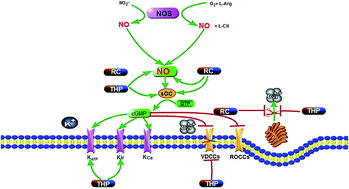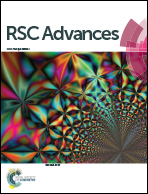Antihypertensive and vasorelaxant effects of Rhizoma corydalis and its active component tetrahydropalmatine via NO/cGMP pathway and calcium channel blockade in isolated rat thoracic aorta
Abstract
Rhizoma corydalis has been used for the treatment of a variety of cardiovascular diseases in China. Tetrahydropalmatine (THP), one of the main active ingredients isolated from Rhizoma corydalis, is reported to have potent analgesic effects and it has been used in Chinese clinical practice for many years. The main roles of the extract of Rhizoma corydalis and THP are their analgesic effect and protective effect towards the cardio-cerebral vascular system. Although there is a lot of research about the cardiovascular protective effects of Rhizoma corydalis and THP, their vasorelaxant effects on thoracic aorta have not been well studied. Therefore, the aim of the present study was designed to observe the acute antihypertensive effect of a 70% ethanol extract of Rhizoma corydalis (RC) and THP as well as investigating the possible mechanisms of vasodilatation induced by RC and THP on isolated rat aorta. The in vivo acute antihypertensive activity was measured on spontaneously hypertensive rats. Measurements (systolic blood pressure and diastolic blood pressure) were recorded before and after RC and THP treatments at 0, 1, 2, 4 and 6 h by a tail cuff method. Isolated rat thoracic aorta were used in vitro, including endothelium-intact and endothelium-denuded aortic rings. Specific inhibitors including L-NAME, ODQ, INDO, TEA, Gli and atropine were used, which were added 20 min before the NA contracted rat thoracic aorta, and then RC and THP were added to induce vasodilatation. The results demonstrated that RC and THP induced vasodilatation in an endothelium dependent and endothelium independent manner. The endothelium dependent pathway was the result of activation of the NO/cGMP signaling pathway. The endothelium independent pathways were involved in the blockade of VDCCs and inhibition of Ca2+ mobilization from intracellular stores, as well as the stimulation of the muscarinic receptor. In addition, the KATP channel was activated in the vasorelaxant mechanism of THP.


 Please wait while we load your content...
Please wait while we load your content...